Microneedling vs. Chemical Peels
The natural aging process can wreak havoc on the skin. As we age, production of the structural proteins collagen and elastin decreases, which can lead to the appearance of fine lines and wrinkles, as well as a decreased firmness and elasticity to the skin. Over-exposure to the sun over time can lead to sun damage, age spots, and other forms of discoloration on the skin. The appearance of scars, such as acne scars and stretch marks, can accumulate over time, making patients feel self conscious, and other skin conditions, such as post-inflammatory hyperpigmentation and rosacea can have a similar effect. These signs of aging can feel frustrating and often have patients wondering if there is anything that can be done. Luckily, there are many treatments available in Dr. Michele Green’s NYC dermatology office to address these concerns, including Botox injections, dermal fillers, laser treatments, microneedling and chemical peels.
Microneedling and chemical peels are two cosmetic procedures that can be used to address a variety of skin conditions and concerns, including skin discoloration, fine lines and wrinkles, large pores, uneven skin tone, and acne scars. While the two treatments can treat many similar conditions, they work in very different ways. Microneedling, sometimes also referred to as “collagen-induction treatment,” works by creating micro-injuries on the skin to boost collagen production, while chemical peels involve the application of acids onto the skin for exfoliation and rejuvenation of the skin. Often, patients wonder which treatment is right for them, which is why it is best to consult with a board-certified, expert dermatologist, such as Dr. Green.
Dr. Green has been treating patients in her Upper East Side New York City dermatology office for more than 25 years with stunning results. Known for her less-is-more approach to anti-aging treatment, Dr. Green expertly provides patients with smooth, bright, natural, younger-looking skin. Highly experienced in a wide range of medical and cosmetic treatments, Dr. Green’s is revered for high patient satisfaction and has been voted one of the best healthcare professionals in New York City by such publications as Castle Connolly, Super Doctors, and New York Magazine. Dr. Green often combines various treatments for the best results and is an expert in Botox injections, dermal fillers, laser treatment, microneedling, chemical peels, and much more.
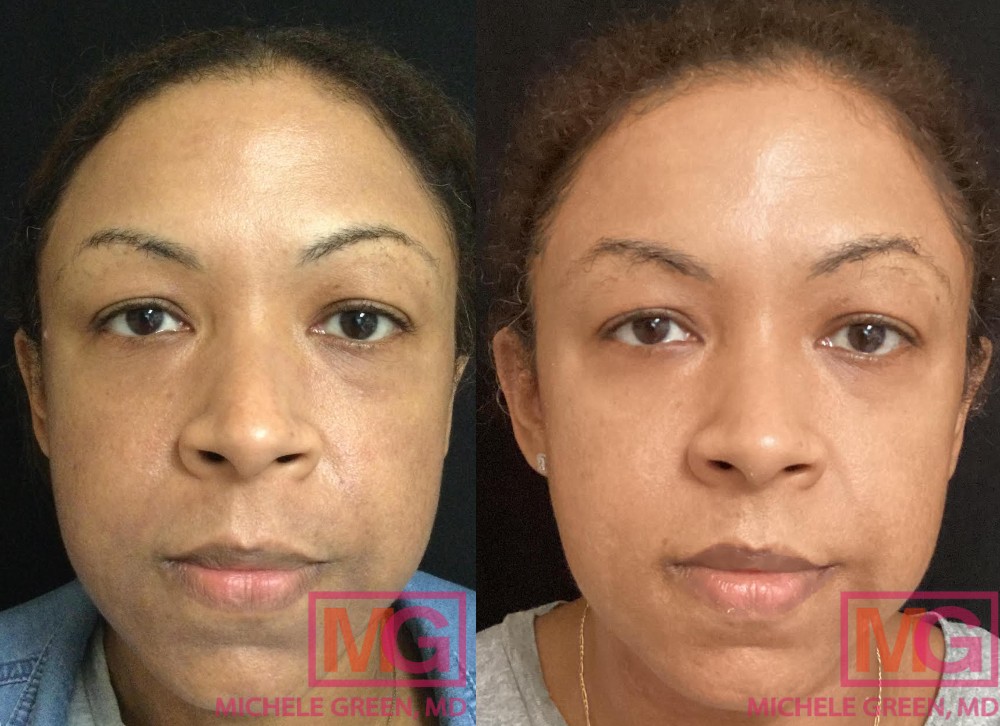
What is Microneedling?
Microneedling treatment is a non-surgical procedure that involves the application of tiny needles to the surface of the skin, in order to induce collagen production for improved skin tone and skin texture. Microneedling sessions can also be combined with the application of Platelet Rich Plasma, which can aid in the healing process and further boost collagen production. When the tiny needles pierce the top layer of skin, the treatment induces the body’s natural healing response, which leads to the production of new skin, which is smoother and brighter than before. Microneedling is an excellent way to improve the appearance of aging or discolored skin on the face, neck, arms, legs, chest, back, and hands, and microneedling is a treatment that can be safely used for any skin type and skin tone.
What is Microneedling used for?
Microneedling can be used to treat a wide variety of skin conditions and address many signs of aging. The treatment is effective in addressing forms of discoloration and hyperpigmentation, including melasma, dark spots, and sun spots, with an overall brightening effect. Microneedling treatment is also good to treat acne scars, particularly depressed acne scars, such as rolling scars, icepick scars, and boxcar scars. When it comes to fine lines and wrinkles, microneedling can naturally reduce the appearance of creases for tighter, smoother skin. Overall, the treatment is excellent for improving skin texture and tone, and tightening the skin for a naturally youthful appearance.
How does Microneedling work?
Microneedling is a process by which surgical grade needles pierce the skin in order to create micro injuries on the surface of the skin. These micro-injuries in turn trigger the body’s natural healing process, which leads to the increased production of the proteins collagen and elastin. With higher levels of collagen and elastin, the new skin that is formed as a result of the natural healing process is smoother, brighter, and tighter. This creates a subtle more youthful appearance to the skin and helps to decrease the appearance of fine lines, wrinkles, acne scars, discoloration, and large pores on the skin.
When you come into Dr. Green’s office, you will begin with an initial consultation where she will determine if microneedling is the best treatment to best meet your needs and aesthetic goals. If so, she will start by applying a topical numbing cream to the treatment area, which is then removed and sterilized after an hour. The microneedling session itself takes under an hour to complete and, thanks to the numbing cream, patients feel minimal discomfort during the treatment itself. If patients choose to pair microneedling with PRP treatment, which Dr. Green often recommends, the PRP solution will be applied to the skin after each pass of the microneedling device and left on the skin for 24 hours. PRP treatment helps to boost collagen production and enhance the healing process. There is no downtime following the treatment, meaning patients can immediately return to their regularly scheduled activity, and patients will see peak results of the treatment 4-6 weeks following the procedure.
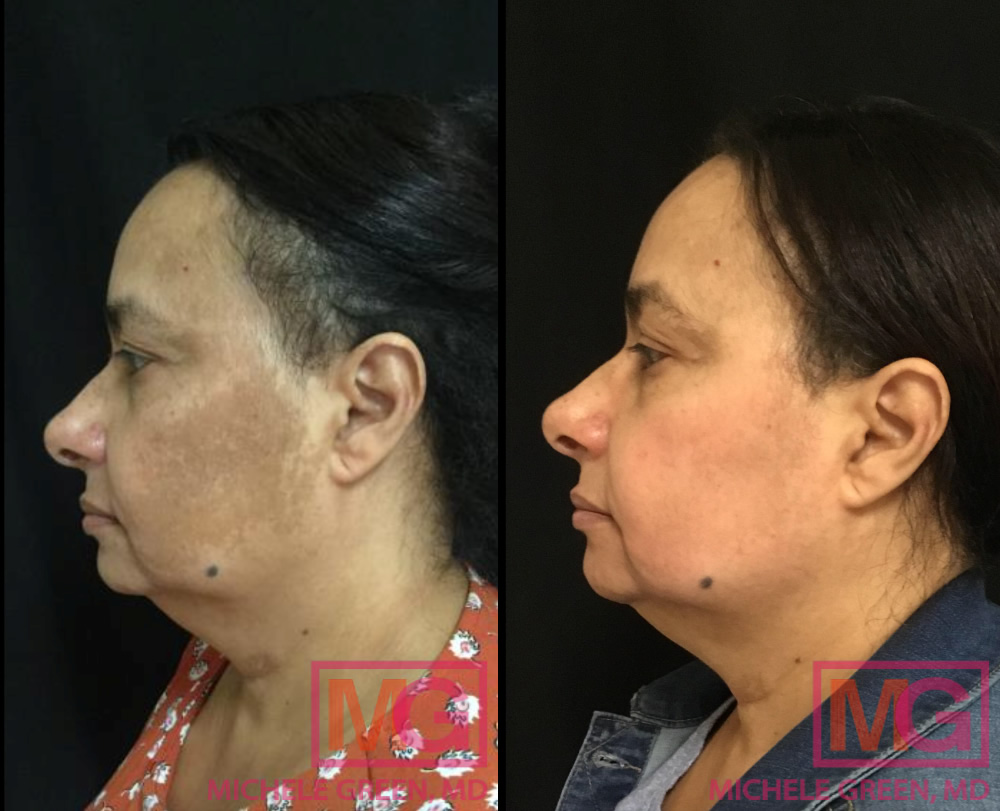
What are chemical peels?
Chemical peels are a resurfacing skin treatment that work to exfoliate the layers of skin. Chemical peel treatments work via the application of a chemical solution, which causes a chemical reaction on the skin to remove dead skin cells and promote the formation of new skin. There are various types of chemical peels that range in depth and type of chemical solution. When it comes to chemical peel depths, there are three different types of chemical peels: superficial peels, medium chemical peels, and deep chemical peels. Each depth of peel can address different types of skin issues and involve different amounts of recovery time. The deeper the peel, the more downtime will be necessary following treatment.
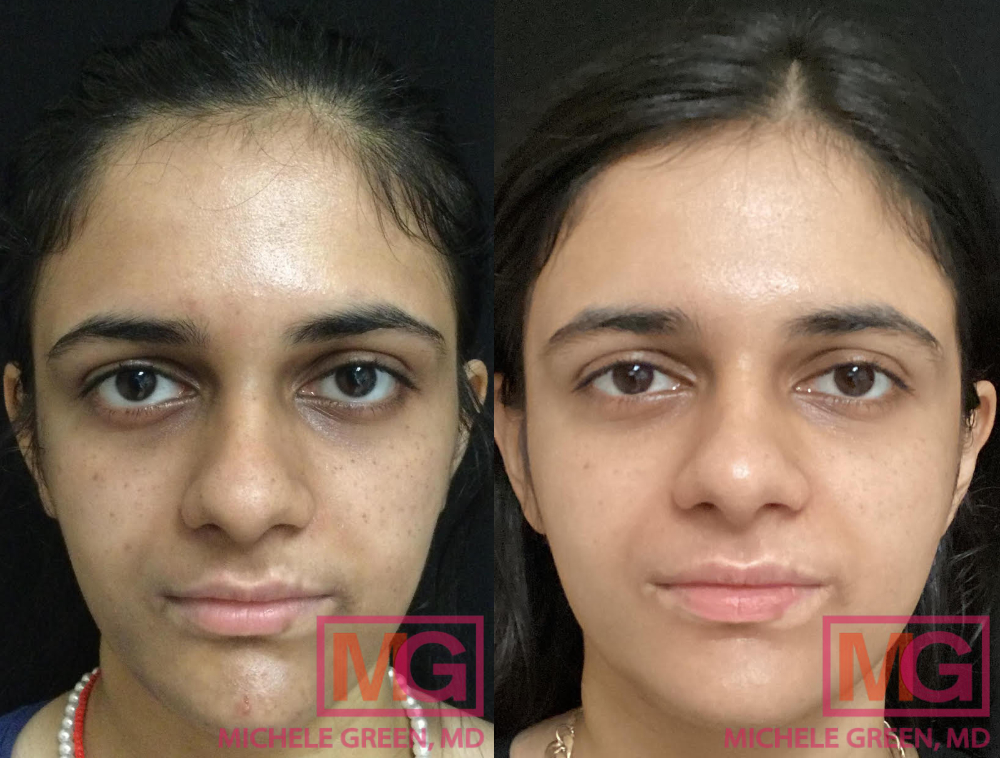
What are chemical peels used for?
Chemical peels can be used to address a wide variety of skin conditions and concerns. For patients struggling with signs of the natural aging process, such as fine lines, wrinkles, and uneven skin tone and texture, chemical peels can help to reduce the appearance of creases on the skin and improve skin texture and brightness. The treatment can also be used to address issues of hyperpigmentation, including sun damage, age spots, melasma, rosacea, and freckles. Chemical peel treatment can also be employed to treat active acne outbreaks, as well as acne scarring that can occur as a result of infected outbreaks.
The different types of chemical peels can work to address different skin issues or concerns, and when you have your initial consultation with Dr. Green, she will help you to determine which depth of chemical peel and type of chemical solution will work best for your needs. Superficial peels, also known as light chemical peels, work to exfoliate the outer layer of skin, known as the epidermis, and is the gentlest form of chemical peel. These superficial peels, which can include Alpha Hydroxy acid peels, Beta Hydroxy acid peels, and Jessner’s peels, can help with minor acne outbreaks, reducing light fine lines, eliminate mild pigmentation, and hydrate the skin. Medium depth chemical peels penetrate to the middle layers of skin, reaching the dermis. Medium chemical peels, such as the TCA peels, work best to address acne scars, deeper wrinkles, sun damage, and more severe hyperpigmentation. A deep peel has the most dramatic results and penetrates down to the deeper layers of skin. Though they have the longest recovery time, deep chemical peels can be used on deeper wrinkles and even some forms of precancerous growths.
How do chemical peels work?
Chemical peels work via the application of an acidic chemical solution that reacts with the dead skin cells and oil found on the surface of the skin. The type of acid applied to the skin varies based on the type of chemical peel being used but the principle for each is similar. When the solution is applied to the skin, it causes a breakdown of dead skin cells and for the gentle peeling of the dirt, oil, and skin cells. The depth of the shedding of skin varies depending on the strength of chemical peel that is used. This exfoliation results in a new layer of skin, which is smoother, brighter, and more even in skin tone and texture, which can eliminate or reduce the appearance of wrinkles, pigmentation, and scarring.
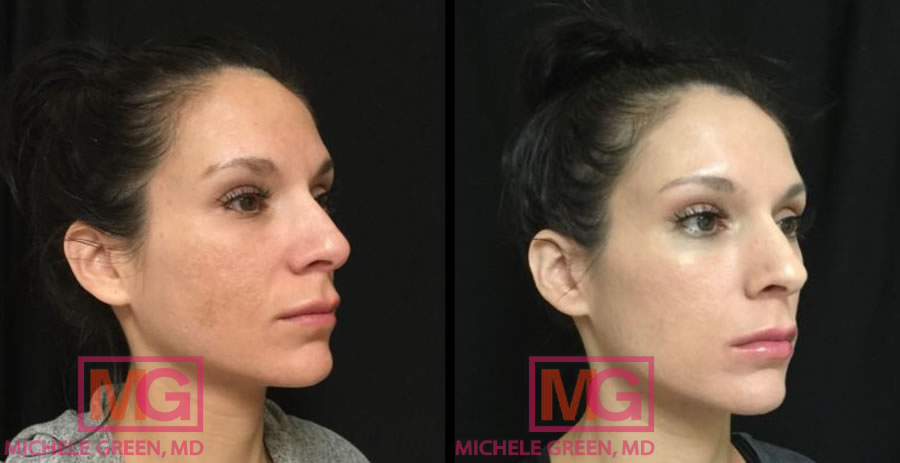
Is Microneedling or a chemical peel better?
Chemical peels and microneedling are used to treat many similar conditions, including fine lines, acne scars, sun damage, discoloration, large pores, and uneven skin texture. Patients often wonder, which is better microneedling or chemical peels, and the answer is: it depends. When you have your consultation with Dr. Green, you will discuss your aesthetic goals and treatment needs and she will examine the treatment area. Dr. Green will then make a recommendation about which treatment will work best for your specific needs. Microneedling is a safe and effective treatment for patients of any skin type or skin tone that requires no recovery time following the procedure, however, patients with active acne outbreaks or an active skin infection should avoid microneedling. In order to achieve the best results, patients may require multiple microneedling sessions spaced several weeks apart. Superficial chemical peels and some medium chemical peels can be used on most skin types but are safest for patients with lighter skin tones. Medium depth and deep chemical peels require some recovery time following treatment but are fully effective after only one treatment session. Patients suffering from herpes or who are currently taking acne medication should avoid the use of chemical peels. Ultimately, neither treatment is inherently “better” than the other, rather it is about determining what would be best for you.
Which is better for treating acne scars: microneedling or chemical peels?
Both microneedling treatment and chemical peel treatments work to reduce the appearance of acne scars. When microneedling is used to address acne scars, the treatment works by creating micro-injuries in the treatment area, which boosts collagen production and allows new skin to form. The new skin eliminates the red pigmentation and uneven texture associated with acne scars. Microneedling should not be used to treat acne scars for patients with an active acne outbreak, as the needles can facilitate the transfer of bacteria on the skin and worsen the appearance of the outbreak.
Chemical peels, on the other hand, both work to eliminate the appearance of acne scars and can be used to address current acne outbreaks. The exfoliation of skin that comes with chemical peel treatment promotes the growth of new, clear skin, which eliminates the appearance of acne scars. Medium depth TCA Peels are particularly effective in treating ice pick scars with high concentrations of trichloroacetic acid. In addition to treating acne scars, however, chemical peels can also treat current breakouts of acne. The clearing of dead skin cells, oil, and dirt on the skin can help to unclog the pores, which aids in eliminating acne.
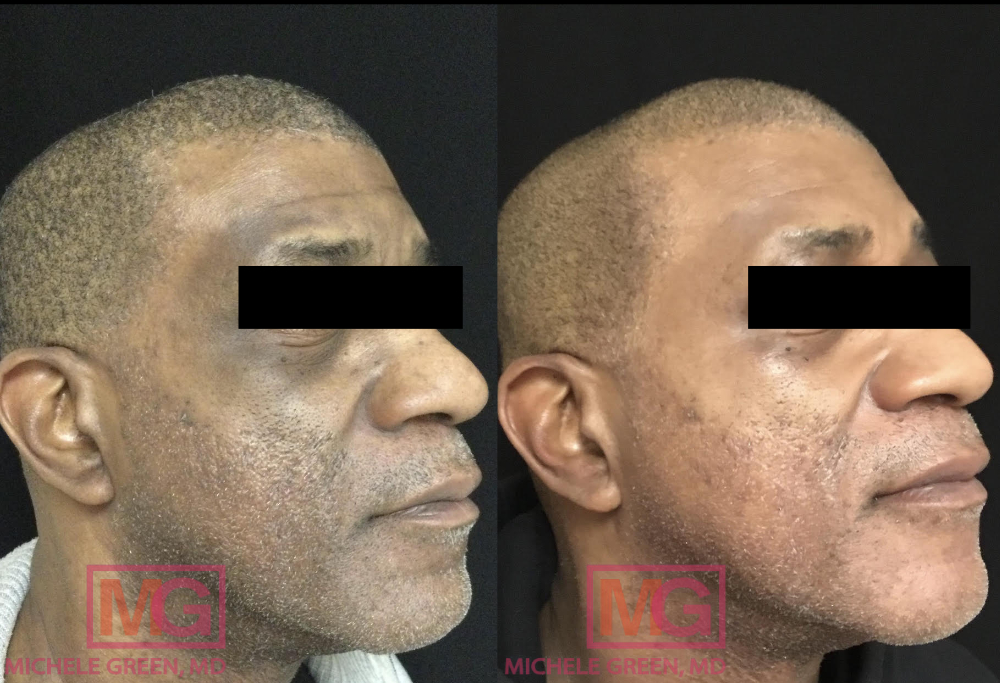
Is microneedling or chemical peels better for anti-aging skincare?
As a result of the natural aging process, collagen production decreases, which means that fine lines and wrinkles begin to set in. These creases on the skin can be frustrating but luckily you do not have to live with them. There are many treatment options to reduce signs of wrinkles, including chemical peels and microneedling. Both treatments boost collagen production, which results in smoother skin, resulting in a natural-looking reduction in fine lines. Superficial peels and microneedling are best for mild wrinkles, while deeper chemical peels can be used to address deeper wrinkles. However, neither treatment can produce truly dramatic anti-wrinkle results, for that it is best to pair microneedling or chemical peel treatments with Botox for dynamic wrinkles or dermal fillers.
Can you do microneedling and chemical peels together?
While chemical peels and microneedling can be easily paired with other cosmetic treatments, they are often not paired with each other. Microneedling and chemical peels address many of the same skin conditions so it is often best to choose one or the other. Furthermore, the treatments cannot be completed in the same treatment session. Performing a chemical peel directly after a microneedling session or microneedling after a chemical peel would be incredibly painful and counterproductive. If you would like to receive both treatments, it is best to wait for at least 2 weeks after one treatment before attempting to perform the other.

What treatments can be paired with microneedling and chemical peels?
While Dr. Green does not recommend pairing microneedling and chemical peels together, there are many other treatments that can be paired with each to enhance the results. Both microneedling and chemical peels can help to rejuvenate the skin and reduce the appearance of fine lines and wrinkles, however, for deeper wrinkles, Dr. Green may recommend adding Botox or dermal fillers to your treatment plan. Botox injectable treatment works to eliminate dynamic wrinkles, which are wrinkles that form as a result of repeated contraction of facial muscles, while dermal fillers can add volume to the face for a more contoured appearance. Patients who are struggling with hyperpigmentation skin conditions, such as rosacea or scarring, can pair microneedling with the V-Beam laser treatment. V-Beam targets red pigmentation in the skin to destroy discoloration and eliminate the appearance of scarring, stretch marks, and broken capillaries. To figure out which treatment or series of treatments can best meet your needs, schedule your initial consultation with Dr. Green.
How to choose between microneedling and chemical peels?
It can be challenging to determine which treatment will work best to fit your needs: chemical peels or microneedling. Both treatments work well to combat discoloration, acne scars, wrinkles, and skin conditions such as rosacea or melasma. That is why it is best to schedule a consultation with an expert, board-certified dermatologist, such as Dr. Green. Dr. Green will be able to examine the treatment area and determine which treatment of series of cosmetic procedures will be right to fit your needs and goals.
How to get started with microneedling and chemical peel skincare treatment
Both microneedling and chemical peel treatments can work wonders to rejuvenate the skin and reverse signs of the natural aging process. Through the use of tiny, surgical grade needles, microneedling induces controlled micro-injuries to boost collagen and elastin production for smoother, firmer, more youthful looking skin. A variety of different types of chemical peels work to exfoliate the skin to fix skin texture and tone, brighten the skin, and eliminate facial blemishes and signs of aging. If you are looking to eliminate fine lines, acne scars, or age spots, reduce hyperpigmentation, and rejuvenate the skin, microneedling and/or chemical peels may be the best treatment for you. To get started with full facial rejuvenation, contact the office today to schedule a consultation with Dr. Green or call 212-535-3088 to create a customized skincare treatment plan for you.
 212-535-3088
212-535-3088